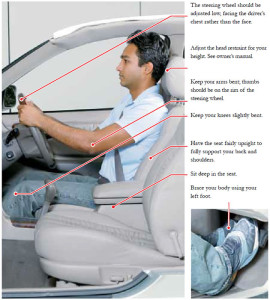NSW Log Book 9. Parking Learning Goal.
Park the vehicle safely and legally.
Learning Content.
Reverse parallel parking.
Angle parking {45, 60 and 90 degrees}:
– Front to kerb
– Rear to kerb
Observation during manoeuvres {blindspots and block outs}
Positioning the vehicle:
– Distance from the kerb
– Distance from other vehicles
Legal requirements for parking.
Facts and Tips
In the driving test you will randomly allocated either; a three point turn, a reverse parallel park, a 45, 60 or 90 degree, front or rear to kerb angle park, so you will need to learn and practice each one.
You should aim to complete your manoeuvres in less than five direction changes.
Practice in quiet areas until you become more confident with your abiilty to position the car accurately.
When rejoining the fraffic you must:
-Check your mirrors
-Signal for at least five seconds
– Check your blindspots before sterring.


